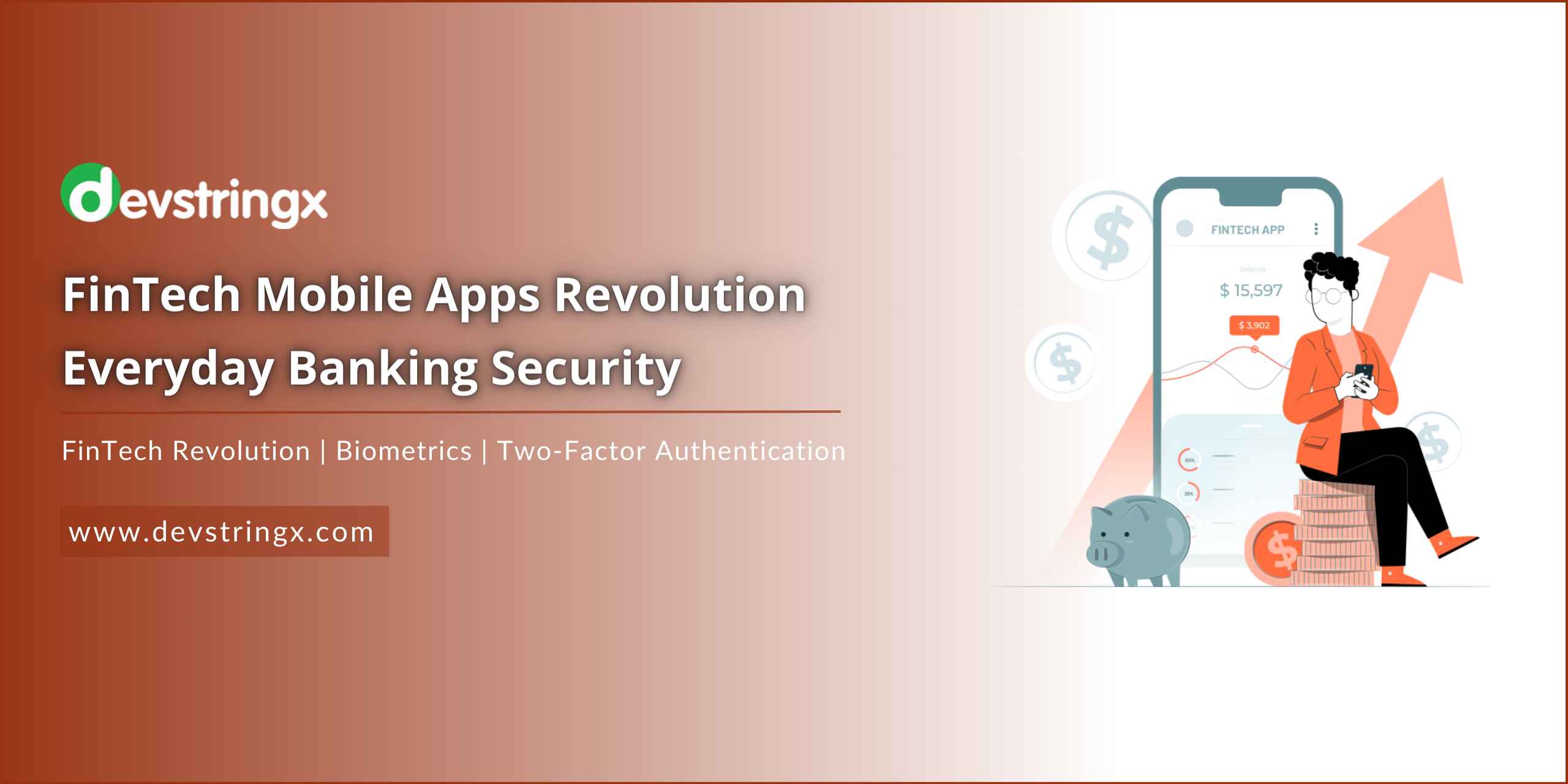Exploring How FinTech Mobile Apps are Revolutionizing Everyday Banking Security
The financial sector is leading the way in innovation, supported by its adaptation and integration of technologies. Finance has always been a field of progress, from the early days of electronic transactions to the age of Internet banking. The recent transformative impact of FinTech through apps showcases a trajectory that sets new standards for convenience, efficiency, and security.
FinTech represents not an incremental step forward but a comprehensive evolution in how financial services is structured, managed, and consumed. Unlike traditional systems burdened by legacy infrastructures and regulations, FinTech is primarily digital and utilizes cutting-edge technologies right from the start. This “born digital” characteristic is crucial when considering the security measures employed by FinTech companies compared to banks.
Understanding the FinTech Revolution
FinTech encompasses a diverse range of interventions in personal and commercial finance. It goes beyond just being an upgrade for financial transactions; it signifies a profound transformation that impacts how money flows through modern society. From blockchain to data sourcing, FinTech redefines our understanding of what is possible in the financial world.
Mobile applications play a significant role in driving this revolution by making transactions and investment activities seamless and easily accessible.
These applications enable users to easily access their bank accounts, credit cards, and investment portfolios without the need for physical presence or paperwork. However, due to the sensitivity of the information involved, ensuring security becomes crucial. It has led FinTech to pioneer groundbreaking safety measures.
Addressing Security Vulnerabilities
In today’s digital age, although traditional banking systems offer a high level of security, they continue to face increasing challenges. Physical banking systems are vulnerable to threats, such as data breaches, tampering with documents, and identity theft.
Furthermore, as traditional banks migrate to online platforms, they often replicate their existing security protocols, which may not translate into strong cybersecurity measures. The conservative approach towards security upgrades in these institutions, combined with their customer base, can lead to the implementation of system-wide changes.
On the other hand, FinTech is born digitally. The sector inherently understands the complexities of cyber threats and adopts an innovative approach prioritizing customer-centric security measures. The very essence of FinTech lies in leveraging technological advancements to provide secure, efficient, and user-friendly services.
How FinTech Mobile Apps Revolutionize Banking Security?
Mobile applications in Financial Technology (FinTech) are bringing about a transformative change in the security of banking systems through the integration of cutting-edge technologies such as biometrics, real-time fraud detection, and blockchain. These applications prioritize user-centric security that revolves around the user’s needs, providing robust protection without sacrificing convenience. With their frameworks, they can quickly adapt to emerging cyber threats, ensuring that customer assets and data remain protected in today’s modifying digital banking environment.
1) Adopting Biometrics
A significant advancement in security is the integration of biometric authentication within mobile apps. Over the years, passwords have always been a vulnerable subject to hacking, guessing, or forceful retrieval. However, FinTech apps have recognized these weaknesses and integrated biometric technology as a solution. Now, users can authorize transactions using their fingerprints, voice recognition, or even facial recognition.
This advancement is truly invaluable in today’s digitally-forward world where identity theft and financial fraud are rife. Biometrics provides users with almost impossible-to-fake authentication methods that directly tie security to their identities, making replication significantly strenuous.
2) Blockchain Technology
Blockchain technology is often associated with cryptocurrencies, but its potential to enhance security is often overlooked. In FinTech, blockchain is utilized to create transparent and unalterable transaction ledgers. Once a transaction is recorded on the blockchain, it becomes practically impossible to change without altering every subsequent ‘block’ of transactions.
For users like us, this brings about a revolution in terms of reduced fraud risk because manipulating transaction histories becomes nearly impossible due to the immutability of the blockchain. Additionally, privacy is enhanced as personal information doesn’t need to be divulged at every transaction point, minimizing the risk of data theft.
3) Two-Factor Authentication
While two-factor authentication (2FA) isn’t exclusive to FinTech, this sector has earnestly standardized it as a security feature. With 2FA in place, two separate forms of identification are required before any transaction can be processed. For example, users might need to enter a password or PIN and then input a code sent to their device.
Two-factor authentication (2FA) is a powerful security measure. It ensures that simply stealing a password is insufficient to compromise a user’s account. It requires access to a device or additional information, significantly reducing the chances of unauthorized access.
4) Artificial Intelligence and Machine Learning
AI and machine learning play a crucial role in the security process within the FinTech industry. These advanced technologies analyze user behavior and identify unusual patterns. For instance, if there is an attempted transaction from a location or for an amount inconsistent with the user’s activity, AI can detect this anomaly and prevent potential fraud.
This proactive approach to security differs significantly from methods that often recognize breaches after they have already occurred. AI and machine learning provide real-time safeguards, significantly narrowing the window in which cybercriminals can operate.
5) Secure Transactions
FinTech applications are heavily investing in encryption techniques. Each transaction undergoes encryption, often end-to-end, to prevent interception by malicious individuals. Traditional banking methods involving paperwork do not offer the same level of security.
Encryption can be compared to sending a private and sealed letter rather than a postcard. If someone intercepts it, they won’t be able to understand what’s inside. This high level of security is applied to every interaction on FinTech platforms, creating a secure environment for users.
6) Regular, Automated Security Updates
One often overlooked revolution that FinTech has brought is automated security updates. Unlike banks with their unwieldy structures and bureaucratic processes, FinTech apps can easily implement frequent updates. It allows them to constantly enhance their security protocols based on the latest threats without any delays.
This agility in adapting to evolving cyber threats is invaluable. Although users may not notice these updates, they play a significant role in maintaining the health and security of the ecosystem.
Conclusion: Looking Ahead
The FinTech revolution continues to reshape the world’s financial scenario by providing users with security, convenience, and control over their finances. The integration of technologies such as biometrics, blockchain, and AI ensures a high level of safety that traditional banks struggle to match.
However, it’s crucial to establish regulations and oversight to safeguard consumers amidst this evolution. The FinTech industry faces the task of finding a balance between fostering innovation and implementing protective measures, all while navigating regulatory requirements and prioritizing the needs of users. It’s a journey that demands adaptation and learning. As FinTech mobile applications continue to push boundaries, they establish benchmarks for consumer expectations in banking institutions. In terms of security aspects, FinTech is setting the pace that the rest of the financial world must strive to keep up with.
Unlock the power of innovation by partnering with Devstringx Technologies top-tier fintech app development company. Let’s build the future of finance together! Connect with our expert team now and bring your fintech vision to life














